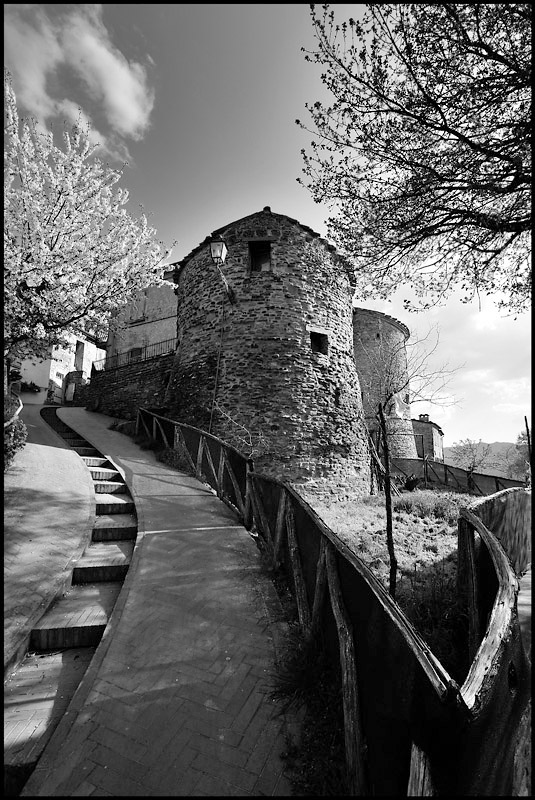|
| Home
|
|
| Home
|
Calbano
 Photo of Maurizio Nicosia |
In
spite of the merciless wearing out of the centuries and the recent
disfigurement of the men, the village of Calbano -converted in fortress
during the Medieval Age- offers the visitor images and sensations of past
times. Situated on the top of a hill, Calbano was certainly for the Romans - as it had probably.been for the Humbrians- a well sheltered fortress. This is testified by the blocks of sandstone and the numerous, reddish bricks belonging to the Roman Age, which can be easily distinguished among the grey medieval stones. In 1267, the bishop Grazia held in Calbano the "comizi generali" (general assembly) to deliberate about the investiture rights and the emphyteutic canons. The church of Sarsina, thanks to the concession of the emperor Federico II, came into possession of the castrum Calbane (ancient property of the bishop of Ravenna) since 1220. Only in 1406 the fortress was surrended, for a short time, to the bellicose Malatesta from Cesena. In 1371, Anglico assessed 12 "fireplaces" and, more or less, the same number of families was still living there in 1733 when the neo-bishop Vendemini, coming from Ciola, spent some time in the towered residence of the governor Zambini. Now, the remaining walls of the donjon keep on spying on Sarsina and on the excursionists who climb up the hill. The seventeenth-century church of Saint Anthony, on a side of the hill, attenuates the warlike ardour of the fortress. Two circular towers supervise the entrance of the fort: they are cone-shaped in the lower part and cylindrical in the upper part. During the centuries, they were degraded to different uses. Inside the fort, the low houses are arranged along the ancient perimeter and watch each other from the stone steps. |
![]()
Latest updating date 23-12-2010